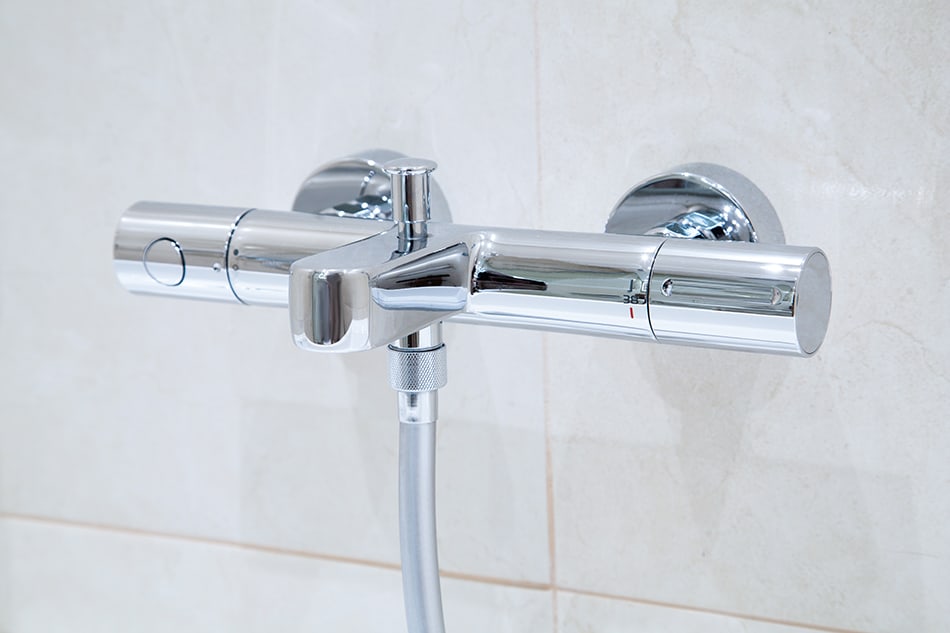In this article from Linquip, we will dive into the world of different shower valve types. We have used showers our whole life and you might have come across quite a few of these types yourself! So, let’s keep on reading to see which ones of these cool types you’ve seen before and which ones are new to you. Are you ready to enjoy it? Then let’s go!
Shower valve types have been designed with unique features, each suitable for specific situations, but all in all, they provide the same function! Whether you are looking to buy a new valve, change your shower system, or simply increase your knowledge on the subject, you should know the different types of shower valves before taking another step. So, let’s take a quick look at different shower valve types:
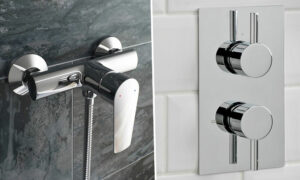
⇒ View a List of Valves for Sale and Their Suppliers ⇐
Different shower valve types
6 Types of Shower Valve are:
- Manual Shower Valve
- Pressure Balancing Valve
- Thermostatic Valve
- Mixing Valve
- Diverters Valve
- Transfer Valve
These are the most popular types. Now let’s dive a bit deeper and take a closer look at each and every one of them.
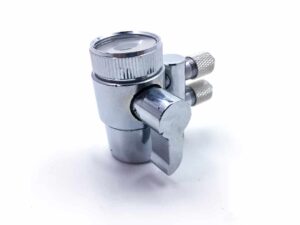
Manual Shower Valve
Manual shower valves are the old-fashioned valves in a shower that we used to see in every house when we were kids! They are still popular among many people, but there are more practical designs with better outlooks on the market that are winning the market these days and gaining more popularity among people day by day. Manual shower valves are still in the market due to a simple reason: Their simplicity! They have one handle, enabling you to control water temperature, and pressure, as well as turn the shower on and off! They are also popular because they are very low cost and are among the cheapest shower valve types available on the market!
The problem with this manual valve is in maintaining the water temperature! The water might momentarily become very cold or hot if another person uses a tap in the house or flushes the toilet.
Another problem with this valve is that you should manually set the temperature every time you want to use the water because they don’t have an option for you to preset the temperature.
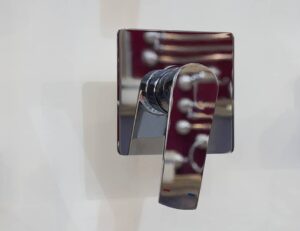
Pressure Balancing Valve
Pressure balancing valves, also known as shower pressure valves, are used for balancing the pressure of the water automatically. They do this from the water pressure of the hot and cold pipes to within 2-3°F of the desired temperature. These valves are also known by the names mechanical valves and anti-scald valves. These shower valve types balance the water pressure from the hot and cold water sources by working through a series of pistons (or sometimes diaphragms) that move. These valves usually contain a single knob for changing the water temperature by turning left or right.
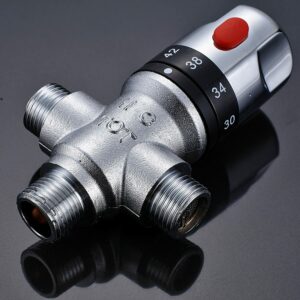
Thermostatic Valve
These valves are considered to be more expensive than other types we mentioned above due to their design. They balance both water temperature and pressure. The difference between a thermostatic valve and a manual shower valve is that you no longer have to wait for the water to reach the desired temperature. You can easily hop in the shower and the thermostatic valve will adjust the temperature of the hot and cold water in response to the temperature changes thanks to its thermo-sensitive element! By pre-setting the water temperature, the valve maintains the desired level and you can enjoy a trouble-free shower each time of the day without any hesitation. They are especially great if you have children or elderly people inside the house since they protect them from getting blasted with freezing water.
These shower valve types contain two handles, one for turning the water on and off, and the other for the temperature. The first one might also be used to control the water volume as well. The good thing about these valves is that they come in different types including:
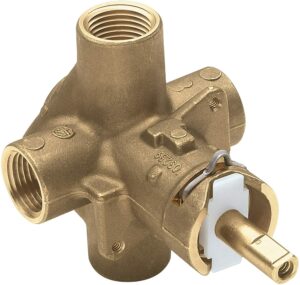
- Twin Thermostatic Shower Valve
This type is the standard thermostatic shower valve with one handle for controlling the temperature and another for turning the water flow on and off. They are used to control a single shower.
Twin Thermostatic Shower Valve with Diverter
This type includes two handles, one to control the flow (on and off) and also to switch between shower heads (since it supports a double shower), and another handle to control the water temperature. The twin thermostatic shower valve with diverter, as mentioned before, is used with a double shower (like an overhead showerhead and a handheld shower wand). But this valve only allows water to run from one head, not both at the same time.
- Triple Thermostatic Shower Valve
These shower valve types include three handles since they support a double shower and enable the water to run from both of them at the same time. One of the handles of these valves is used for controlling the temperature of both heads, and the other two handles are for controlling the water flow (turning the water on and off for each shower head.)
- Triple Thermostatic Shower Valve with Diverter
A triple thermostatic shower valve with a diverter has been designed to control three different shower outlets. They have three handles, one for controlling the temperature of the outlets, the other for operating the body jets (for controlling the flow of the water and turning them on or off), and the last one for the remaining outlets to switch them on or off. There’s also a switch that enables you to switch between the remaining outlets for controlling them.
Mixing Valve
These shower valve types are the successors of the pressure valves and the thermostatic valves. They are those old valves that contained two separated valves that could be twisted to adjust the cold and hot water to adjust the pressure and the temperature of the water. They were used in the old days and are not popular these days. Mixing valves were also among the cheapest shower valve types that were on the market, suitable for the ones that were building a house on a tight budget.
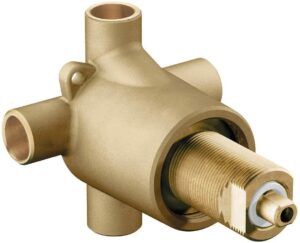
Diverter Valve
These shower valve types are among the most recent ones available on the market these days. They can be seen in almost any modern design. They are used when you need to operate with different shower outlets. They enable you to control the water direction instead of controlling the temperature of the water flow. Diverter valves have three types:
- Tee Valve
The tee valve utilizes a pull arm and is used where the water runs in the tap. When the water temperature reaches the desired level, the arm is then pulled, blocking the faucet or tap and directing the water to the shower. You can usually see this valve type in hotel rooms.
- Two-valve Diverter
This type of shower valve contains two knobs: a rotating control for cold and hot water and another control for diverting the water between the shower and the tub.
- Three-valve Diverter
Last but not least is the three-valve diverter that contains three knobs, one for diverting water between the shower and the tub, and the other two for hot and cold water.
Transfer Valve
This valve type, the same as the diverter valve, is also among the most recent type of shower valve that has been designed for the needs of the market. They have been designed to direct water to different outlets at once. The newer models of these shower valve types contain digital control with different programs and features, setting you free from all the hustles of working with the knobs and adjusting temperature and pressure!
Those were the most popular shower valve types available on the market! Which ones were the ones you’ve seen before? Which one works best in your opinion? Comment below and share your experience with us! Don’t forget to sign up on Linquip if you have any questions about shower valves. Our experts will get back to you ASAP!
Buy Equipment or Ask for a Service
By using Linquip RFQ Service, you can expect to receive quotations from various suppliers across multiple industries and regions.
Click Here to Request a Quotation From Suppliers and Service Providers
Read More on Linquip
- The 10 Best Shower Valves
- Parts of Shower Valve: Name & Diagram
- 6 Types of Non Return Valve (Ultimate Guide)
- Types of Pressure Relief Valve: All you need to know about PRVs
- A Complete Tutorial To Learn About Different Types Of Check Valves
- Backwater Valves Installation, Costs and Maintenance
- How to Repair a Gate Valve? (Clear Guide)
- Backflow Valve Installation, Costs and Maintenance
- How to Install a Thermostatic Mixing Valve? (Costs and Maintenance)
- How to Install a Water Pressure Reducing Valve? (Costs and Maintenance)
- Check Valve Installation Costs and Maintenance
- The 10 Best Water Shut off Valves
- What is Drain Valve? Working Principle, Types & Applications
- What are Coaxial Valves? Working Principles and Type
- What is Isolation Valve? Working Principle & Types
- Backwater Valves: Working Principles & Types
- What is Block Valve? Working Principle & Types
- Butterfly Valve Installation Costs and Maintenance
- How to Install a Saddle Valve? (Costs and Maintenance)
- How to Install Check Valves? (Costs and Maintenance)
- A Comprehensive Guide To Different Types Of Air Valves
- Different Parts of Check Valve with Diagram
- What is Pilot Valve? Working Principle & Types (Complete Guide)
- 6 Types of Non Return Valve (Ultimate Guide)
- Types Of Solenoid Valves: Everything You Need To Know
- 6 Main Types of Plumbing Valves: Complete Guide
- 10 Main Types of Shut Off Valve: Ultimate Guide
- 10 Types of Water Valves: Ultimate Guide
- 4 Types of Hydraulic Valves & Their Working Principles
- Types of Pneumatic Valves: Specifications and Working Principles

